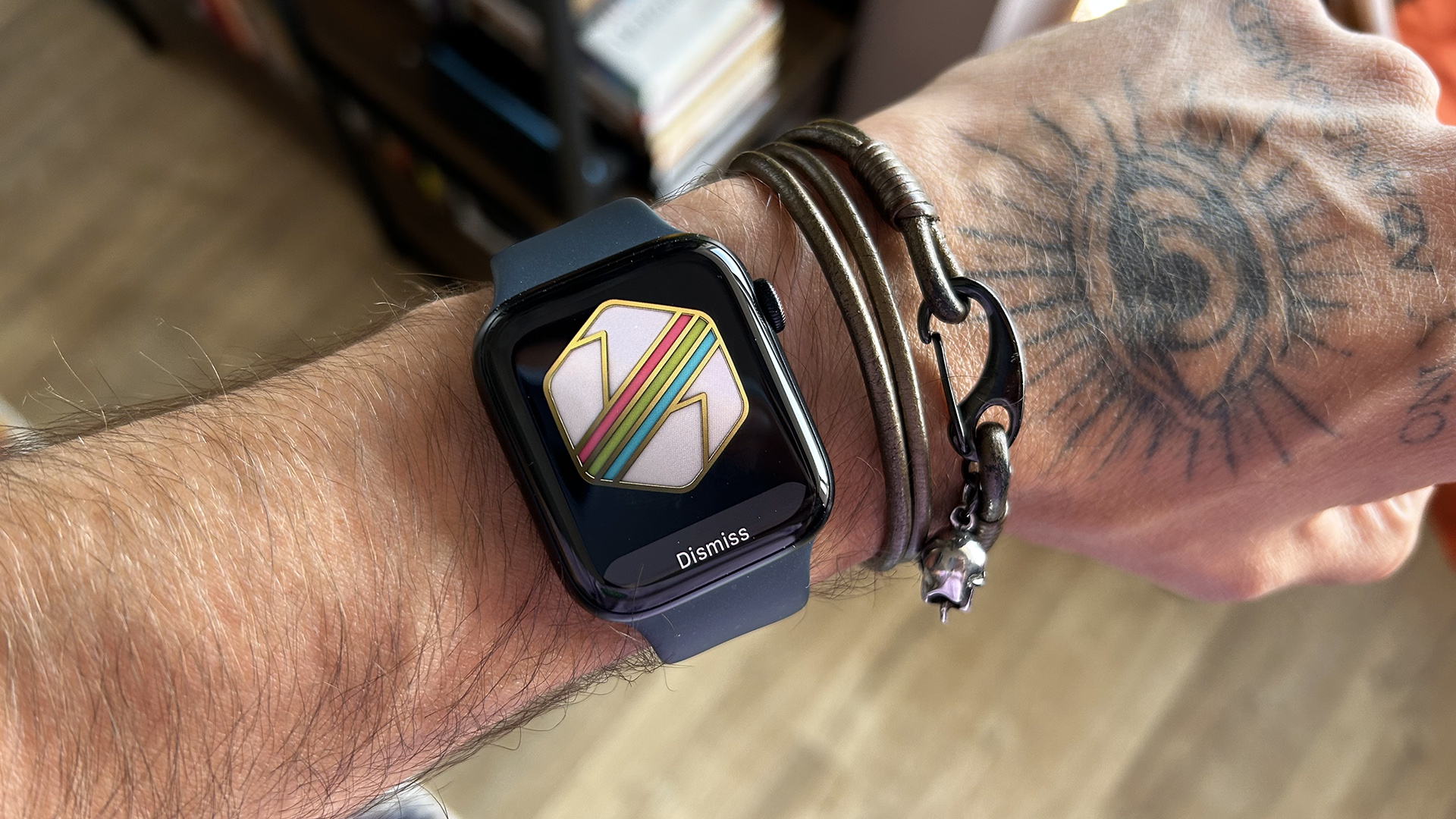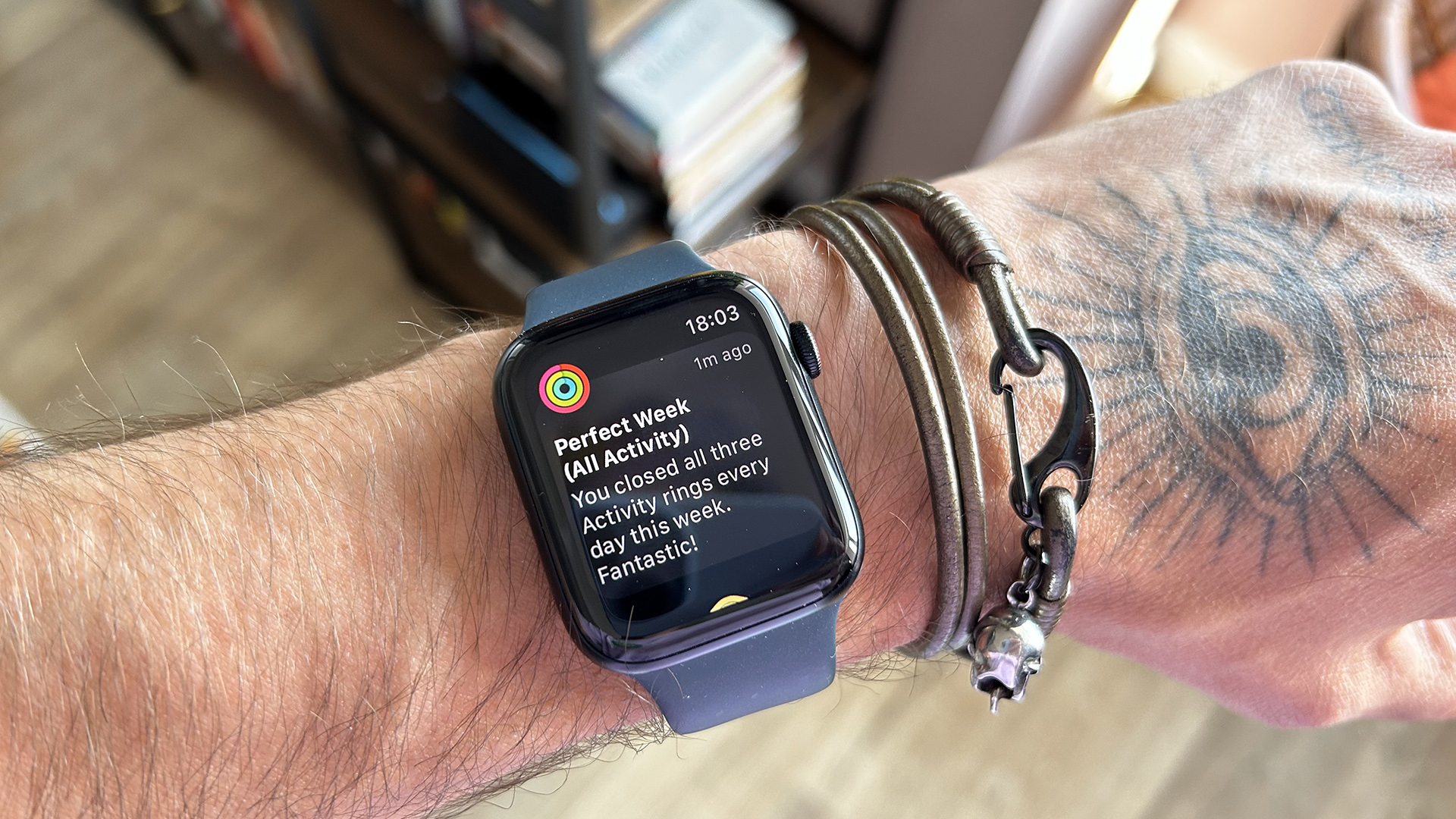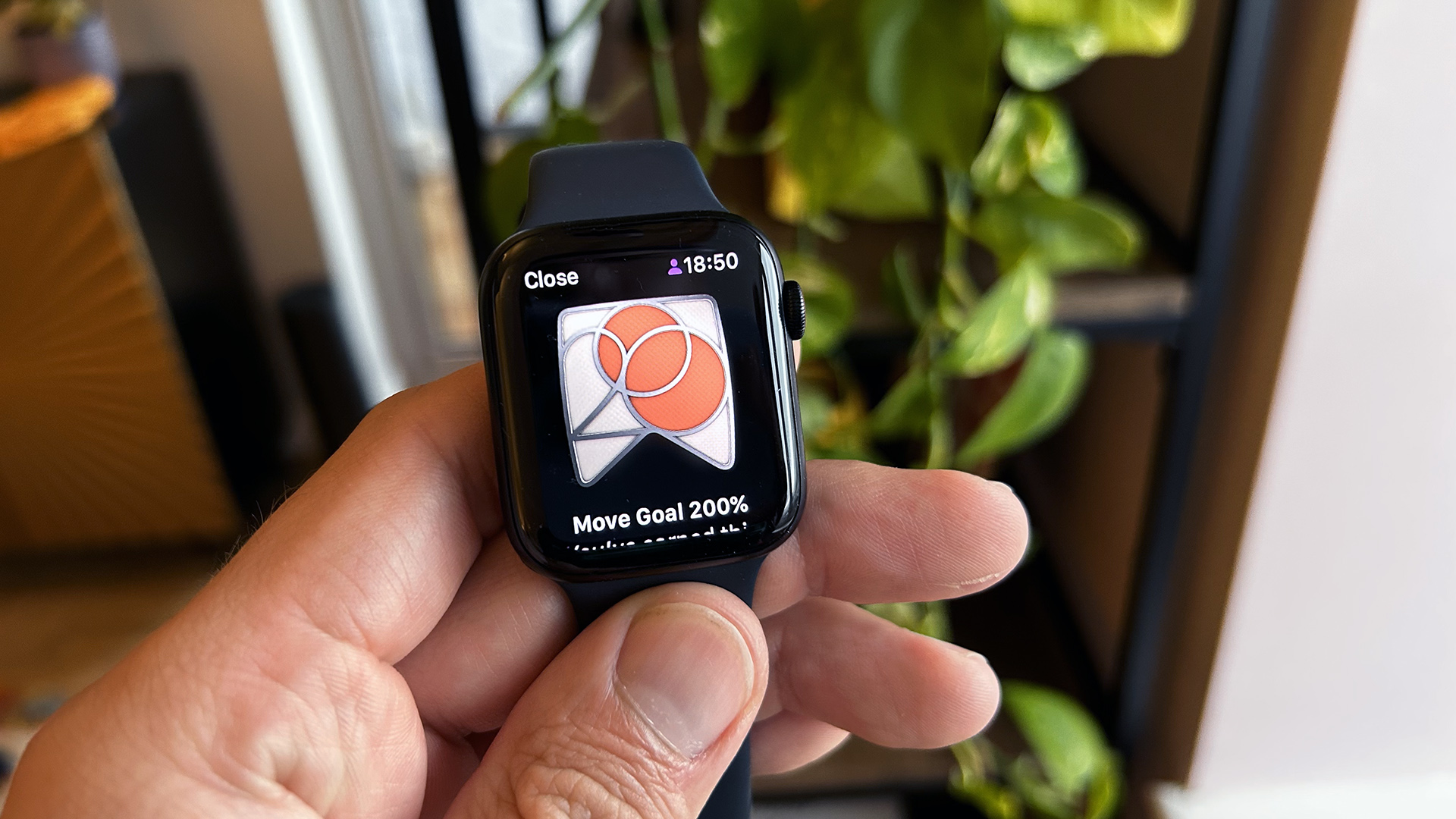
Most wearables these days have some sort of gamification system in place, helping you stay motivated by letting you earn virtual badges and trophies. A few of these are harder to get and require you to complete tasks daily for a certain period. The Apple Watch's Perfect Week trophy is one of these, and it took me two months to get it. Here's what I learned from the experience.
Not sure about you, but I love collecting fitness-themed virtual badges and trophies – Fitbit and Garmin offer these, and so does Strava. I got hooked on Apple's system when I tested the Apple Watch Series 8 and ran the London Marathon with the Apple Watch Ultra. So when it came to trying the Apple Watch SE (2nd Generation), I set myself the goal to earn to 'Perfect Week' trophy to keep things exciting.
To do this, you need to hit your Stand, Exercise and Move goals every day for a week. This means standing up for at least a few minutes for at least 12 hours, exercising for at least 30 minutes, and hitting your daily calorie goal every day. This all sounds straightforward – it is – but in practice, you might find (as I did) that there is one day a week when hitting all three goals is a real challenge.

It could be because you're having a lazy day, but occasionally, it'll come down to the Apple Watch not detecting your movement just right. I missed out on my Stand goal at least a couple of times because the smartwatch didn't log my walks at home, as I was traversing the great distance between my home office and the kitchen. It can be a real downer when this happens, especially if you only notice right before bedtime that you only have 11 hours instead of 12 logged.
Of course, hindrances such as not hitting the Stand goal on Wednesday and having to restart my 'Perfect Week' streak won't discourage a fitness pro like me. I know that no matter how sophisticated the best smartwatches are, there will always be an element of uncertainty in how they track your vital metrics. Expecting any watch to know exactly what you're doing throughout the day is just an impossible ask.
After all, watches rely on their sensors to 'see' you, so anything they can't detect via these will be missed. Plus, it also very much depends on the algorithm to make sense of the sensor data, which is – and always will be – tailored to the 'average person' and not you, meaning it will occasionally misinterpret data.

Anyhow, I learned a lot from chasing the 'Perfect Week' trophy, not just about the Apple Watch but also about myself. At first, I tried cutting corners by sometimes only standing up from my desk when the watch prompted me ten minutes before the hour ended to stand up. This, combined with the watch's sensors not always playing ball, often resulted in me not hitting the Stand goal in that hour.
A more proactive approach helped me a lot. Instead of waiting until the watch prompted me, I moved around at the start of the hour just to be sure. When I walked to the train station in the morning, I recorded the activity as a walking workout, again, just to be sure. I went on another walk at lunchtime, so I didn't have to exercise quite as much after work.
All these little things did add up. Once I had my system in place, earning the 'Perfect Week' trophy felt almost effortless. I went way over my Exercise and Stand goals practically every day, which in turn, made me confident about hitting the goals for the rest of the week.
It's worth mentioning that it's possible to earn the Perfect Week and most other trophies by *cough* cheating. You can set the Stand goal to one hour and the Exercise goal to 5 minutes, but this defeats the trophy's purpose. You might unlock the achievement, but you'll always know it wasn't through effort. What's the point, then?
Moving around for 30 minutes daily and standing up for five minutes every hour shouldn't be an achievable goal for anyone remotely fit. You need to move around a little bit if you want your metabolism and brain going, and trying to earn these trophies will help you do that. In a fun way.







